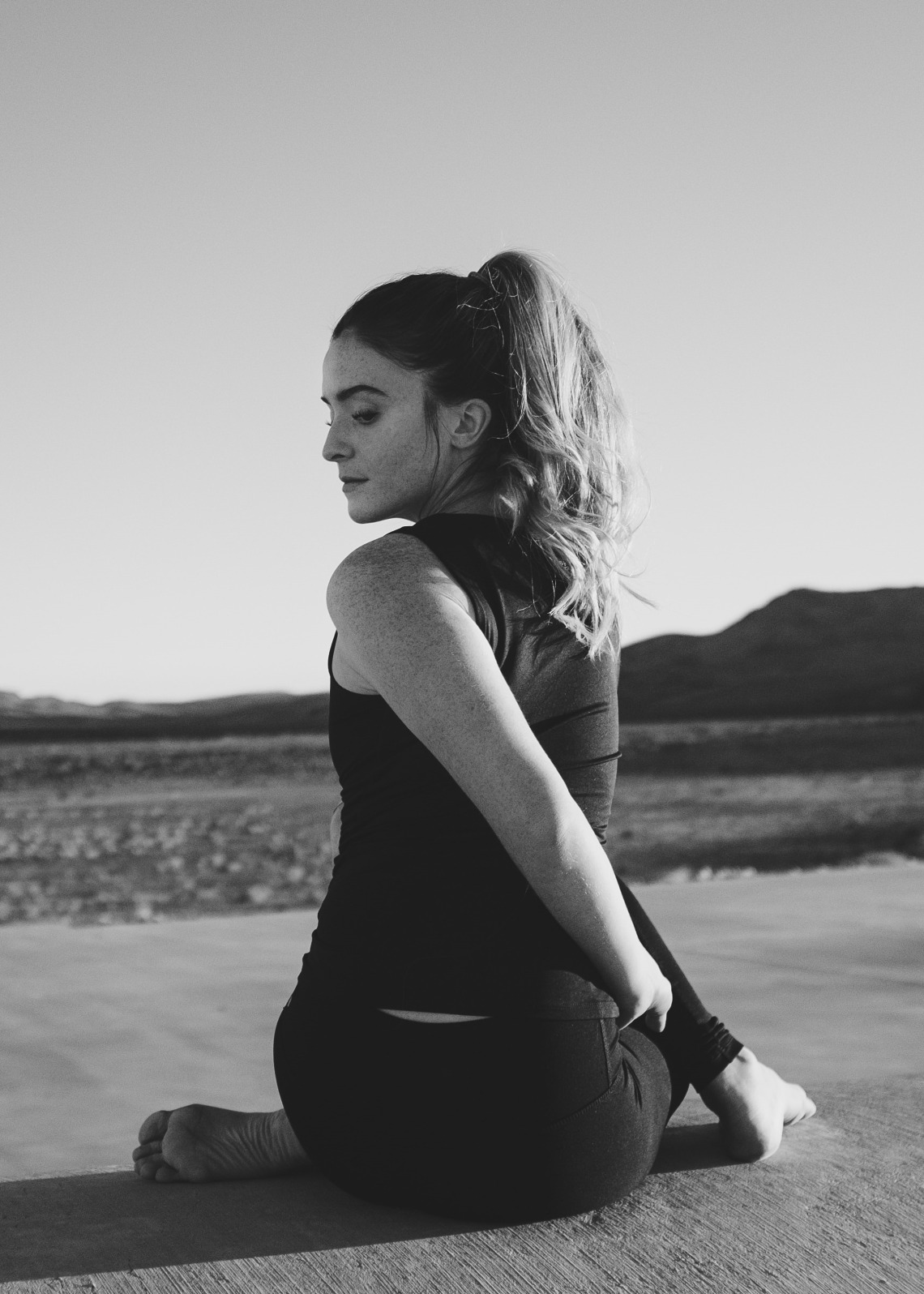Yoga to Ride the Waves of Transition

Here we are, looking towards another pandemic-informed year. In this next year, we will have more opportunities to change, grow, and adapt. With all of the excitement and joy of re-opening, there may also be stress and anxiety present. It is completely normal to feel all of these emotions during any kind of transition--and this next year will be full of them. It is a good time to keep up any practices that you used during quarantine to manage difficult emotions. Or to develop new skills to care for yourself as we shift back into more in-person learning, working, and socializing. Yoga is one practice that can help us reduce stress and find inner strength as we move through transitions.
In the West we often think of yoga as physical movements or poses. However, the movement practice of yoga, or asana, is part of a much larger philosophical framework in service of relieving suffering and attaining liberation. The Sanskrit word yoga comes from the word, yuj, which means “to yoke” or “to join.” The practices of yoga harness the attention and guide us towards an inner place of calm and stillness within. Susanna Barkataki (2020) writes “yoga is the calming of the fluctuations of the mind in order to find unity within…this unity comes by bringing mind, body, and heart into harmony.” We can access inner stillness and wisdom even as we live through circumstances that are outside of our control. That is to say, we can choose how we relate to our inner experience, even when we cannot control aspects of our outer experience.
As you think about all that awaits you this year, take a moment to pause and check-in with your body. What emotions, physical sensations, or images come to mind when you look inward? Do your best to compassionately allow whatever arises to be there. Whatever is present, it has important information for you about what you care about and what you need in this moment. It can be easy in times of transition to move quickly and ignore the signals of our body, heart, and spirit. However, it is important that we find ways to safely be with our feelings during this time and to allow them to move. Like most things in life, the only way out of discomfort is through it. Emotions that are pushed away in an effort to avoid pain don’t go away, they simply “go underground” as Mary and Rick NurrieStearns (2013) write in Yoga for Emotional Trauma. Unacknowledged feelings and experiences get stored in our bodies’ tissues. If unattended to, overtime they can cause tension, pain, and physical ailments. Yoga can be a gentle and empowering way to “feel it to heal it.”
Here are 10 yoga poses to help you meet yourself with compassion and care as you ride the waves of transition.
-
Balasana. Child’s Pose - From your hands and knees, sit hips back to meet heels. Stretch arms out along side ears. Rest forehead to floor. Breath into your hips as you stretch your arms forward.
-
Seated Pose with head and neck rolls - Find a comfortable seat on the floor with legs crossed. Take a breath to allow your hips to anchor to the floor. Bring right ear to right shoulder. Roll head through heart center until left ear meets shoulder. Repeat with your breath.
-
Seated Pose with twist - Sitting with legs crossed in front of you, bring right hand to left knee, left hand behind hips. Look over left shoulder. Repeat on other side.
-
Adho Mukha Svanasana. Down Dog - From hand and knees, tuck toes under and walk knees back several inches. Lift hips and press feet back. Grip floor evenly with fingertips and press through first index knuckle.
-
Uttanasana/Ardha Uttanasana. Forward fold, half forward fold. - Step feet forward between hands. Bend knees enough to connect ribs and thighs. Inhale, lift spine parallel to floor with fingertips on floor or shins. Exhale, fold forward.
-
Tadasana, Mountain Pose - Stand tall with weight evenly distributed between all four corners of your feet. Arms at your sides. Bring shoulder blades towards each other on back. Lift through chest, chin, back of skull.
-
Anjaneysana, monkey lunge - Step left leg back, lower knee to floor. Bring torso over hips, hands to hips. Squeeze back knee, front heel towards each other. Lift arms overhead. Repeat on other side.
-
Janu sirsasana, head to knee pose - Sit on your mat, legs straight out in front of you. Bring left sole of foot to right inner thigh. Lift arms overhead, fold forward at hips. Reach heart center towards shin. Place hands on floor on either side of extended leg. Repeat on other side.
-
Baddha konasana, reclined bound angle - Bring soles of feet together. Interlace hands around feet. Press feet towards each other. Sit upright or if knees are below hips, bow forward, heart center towards floor.
-
Legs up the wall. - Sit up with right hip and shoulder against the wall. Lie on your back and rotate hips towards the wall, walking feet up the wall. Allow legs to relax, supported by the wall. Arms can be along sides, or resting anywhere on torso that brings you comfort.
References
Barkataki, S. (2020). Embrace Yoga’s Roots: Courageous Ways to Deepen Your Yoga Practice. Ignite.
NurrieStearns, M. & NurrieStearns, R. (2013). Yoga for Emotional Trauma. New Harbinger Publications.

